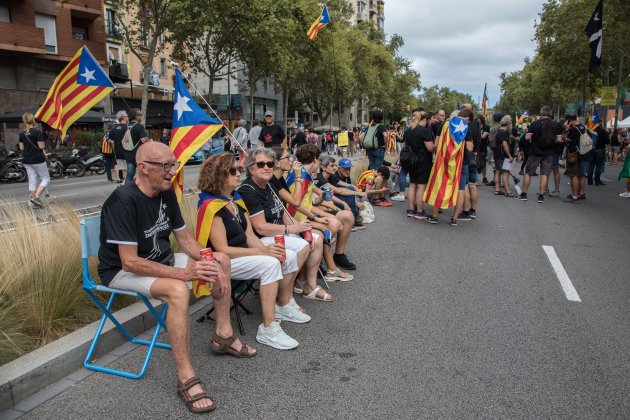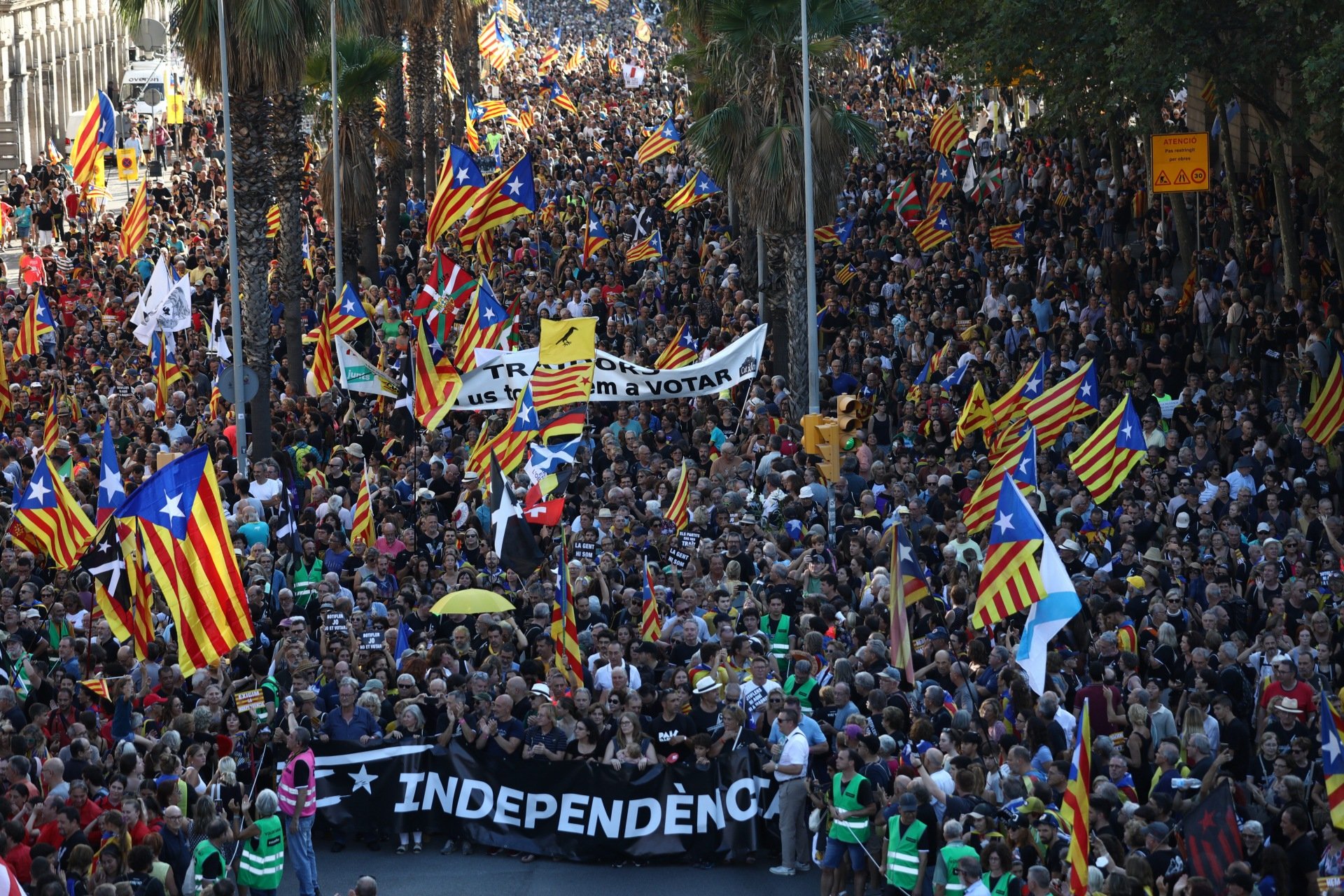Beyond the political messages generated by the pro-independence movement demonstration held by the Catalan National Assembly (ANC) on September 11th, there is one aspect that no one believes. The attendance data provided by Barcelona's Guàrdia Urbana - the police force responsible to the city council of mayor Ada Colau and law and order head Albert Batlle - does not make sense at all. The major downtown boulevards of Barcelona, from Avinguda del Paral·lel to the Estació de França, according to data from the Barcelona police, contained a total of 150,000 people. A figure that is seriously at odds with the calculations made by the ANC organization, which raised the turnout figure to 700,000 people.
The data was provided by the Guàrdia Urbana, at half past six, when the speeches were starting in the final part of the march. From around five in the afternoon until then, according to them, they calculated the rally turnout following a specific methodology, which although they have made it public, does not suggest a great amount of scientific rigour: the images themselves from Diada 2022 seem to discredit not the method, but its application.
How does the Guardia Urbana calculate the size of a demonstration?
First of all, the officers who are tasked with calculating the attendance at a demonstration mark various criteria of "occupation density per square metre", depending on whether it is "low", "high" or "very high". In the first of the criteria, the police make the judgement that there is between 0 and 1 person per square metre; in the second, between 2 and 3, and finally, in the third case, 4 people per square metre, as sources from the Barcelona police force explained to ElNacional.cat.

Then, they measure the area affected by the march in an exhaustive way, subtracting from the total area elements such as closed-off flowerbeds, public transport stops, monuments and urban furniture. With the Guàrdia Urbana officers on the street, both in uniform and plainclothes, plus cameras and helicopters, and the images that arrive from security cameras and live media broadcasts, they check their data. From this calculation, the Barcelona police came to the conclusion that around 150,000 people turned up to call for Catalan independence in the capital in this renewed political expression on 11th September. The only official estimate available is this one, from the Barcelona city council. The Catalan interior ministry, which controls the Mossos d'Esquadra police, has not made public any turnout data.
The data that doesn't make sense: 1 protester per square metre?
Almost an hour after the start of the demonstration, the crowd occupied about 150,000 square metres -that is, from the back of the march which still stretched will up Avinguda del Paral·lel - almost as far as Carrer de Parlament - about 2.6 kilometres from the Estació de França, near the Parc de la Ciutadella, where the speeches were about to be given and where the march ended.
If we take into account the Guàrdia Urbana methodology and the area occupied by the demonstration, the implication is that the police force under mayor Ada Colau saw only the lowest level of density in their range, one person per square metre, a calculation that doesn't seem to fit with the visual evidence.
There were clearly areas where the human density, within this 150,000 square metre area, was high - 2-3 people per square metre - or very high - 4 people per square metre. The exact number will probably never be known, but the judgments made - including possible political judgments - to produce the key number which will remain associated with Sunday's demonstration in the centre of Barcelona have left as many questions as answers.

